Old Manila has a new chef
Young French chef de cuisine Gaël Kubler is bringing excitement, sustainability, and his very own ‘French touch’ to The Peninsula Manila’s iconic signature restaurant.
A young French chef has taken over the reins of The Peninsula Manila’s signature restaurant Old Manila, and is bringing excitement, sustainability, and his very own “French touch” to the venerable icon.
Chef Gaël Kubler has only been in the country for four months, yet has seen and done more than many locals (including going to a sabong) and explored areas beyond farmer’s markets in search of the best produce for his kitchen. “At the beginning, it was almost 80% imported and 20% local,” he says of Old Manila’s ingredients. “Now it's 70% local and 30% imported, and for the new menu in January, I want to push, like, 80% local and 20% imported.”
The 32-year-old chef hails from Alsace, a region in northeastern France that borders Germany and so has a distinct German influence in its food, like choucroute (sauerkraut with sausages and potatoes), which happens to be the handsome and charming chef’s comfort food and how he would characterize himself on a plate.
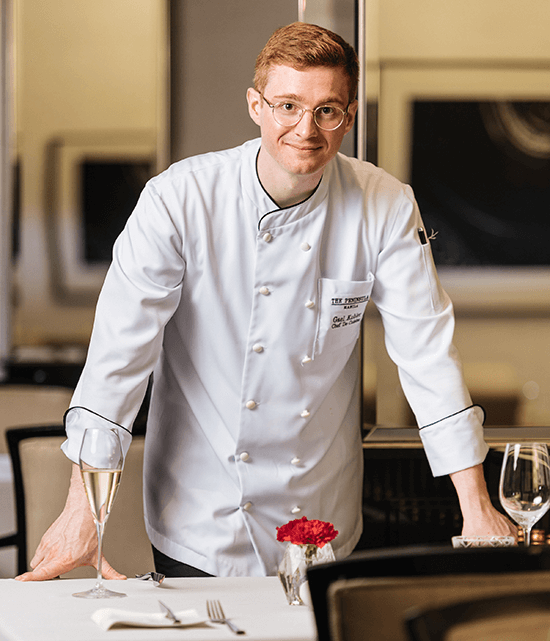
It was his grandmother who inspired him to become a chef, when the young Gaël would rather have become a rugby player like his childhood hero, New Zealand superstar Jonah Lomu. “I remember making brioche with her,” Kubler recalls about his grandmother. “It was also because of a promise I’d made to her that I decided to pursue a career as a chef.”
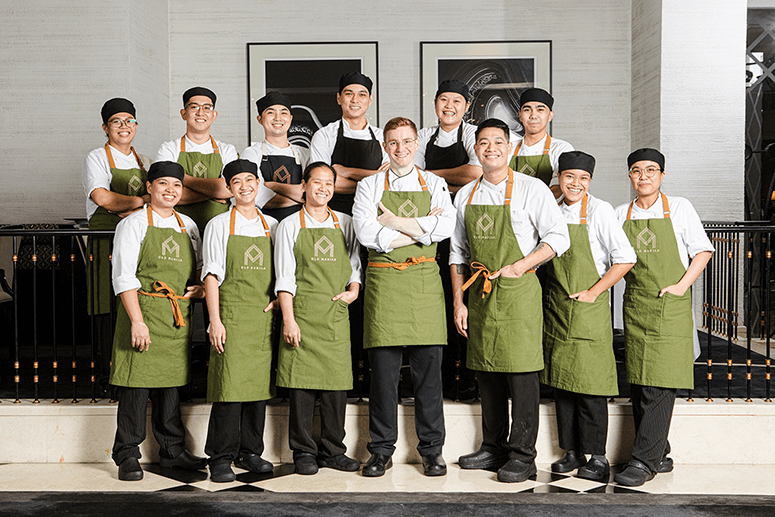
He went to culinary school for formal training and in his rise from commis to chef de cuisine, was mentored by three-Michelin-star chefs Marc Haeberlin at Auberge de L’Ill in Alsace and Michael Nizzero at The Ritz London. “Monsieur Haeberlin taught me two things that have never failed me in my career,” Kubler says. “First, that I am only as good as my team. I must show them the same care and respect that I do our guests. Second, respect for the produce and simplicity, flavor, and honesty in my dishes.”
We tasted all those qualities in chef Kubler’s dishes at Old Manila. Therese loved the amuse bouche with prawns that were flown in fresh from Cebu, with mango relish and French caviar on top.
Scott tucked into the Wagyu Beef Tartare, for which the chef uses “a little more ketchup and mayo for Filipino palate, bit of sugar.” It was still classic, zesty and fresh with a cushiony homemade sourdough bed beneath.
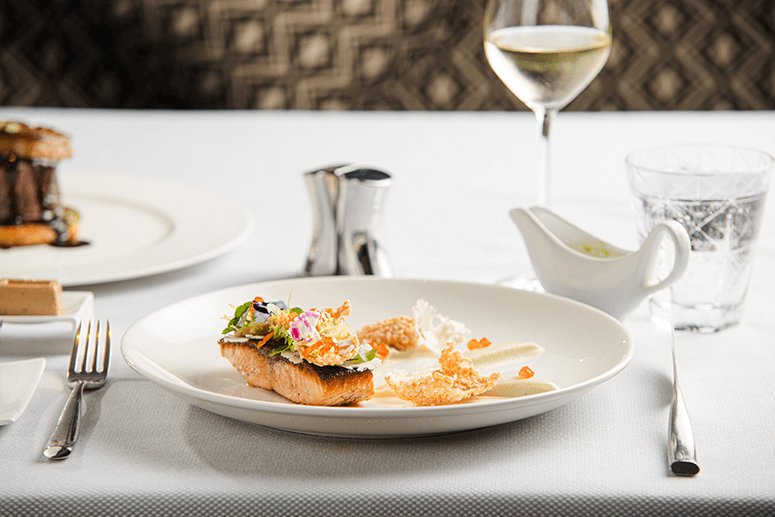
Nuts and guanciale (pork cheek marinated with truffle) gave the velvety Jerusalem Artichoke Velouté crunchy and chewy textures.
Kubler sources from different farmers from as far afield as Batangas and Palawan for the best ingredients. “For me it doesn’t make sense to buy French lobster coming directly by flights,” he says. “I prefer to buy Palawan lobster, for example, so for the new menu in January, I bring Palawan lobster fresh from Coron.”
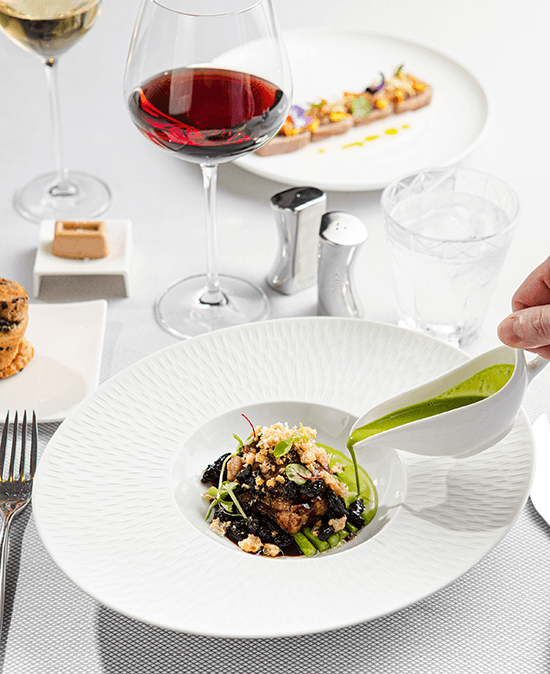
He describes his menu for Old Manila as “not French cuisine; it's Filipino products with a French touch.” He’s also shaking up the traditional fine-dining format in favor of something more current and convivial. “Everyone needs to feel comfortable at the table,” he says, ‘that's why I don't want to make a big menu with six, seven, eight courses—I think it’s not very personal. I prefer when people can share it. This is very important, especially after the pandemic. The big menu with 10 courses is done. It doesn't exist anymore in Europe as well. People don't want to pay now $200 for 20 grams of Australian caviar. If they're happy with the food, I'm happy as well.”
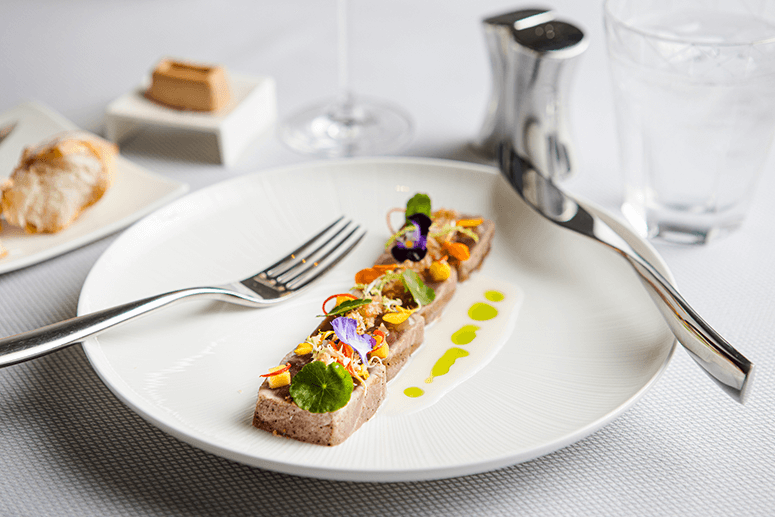
Next came Ahi Tuna Carpaccio, fresh tuna from Coron that Kubler simply sears with coconut dressing and ginger oil to let its natural flavors shine through.
The Seared Duck Foie Gras is from a French recipe with local vegetables: “We eat this one for Christmas with bouillon or consommé,” Kubler says. It’s a traditional Alsatian Christmas dish.
While Therese enjoyed her main of Atlantic Turbot with French white wine sauce, fresh prawns, bok choy and local mushrooms, The Peninsula Manila’s director of public relations Mariano Garchitorena gave us a history lesson on Old Manila. “When it first opened in ’76 I think we were ahead of our time,” he says about the restaurant, which began by serving fine Filipino food and has evolved to Kubler’s vision today. “Being a 47-year-old-hotel with a new client base, we're trying to be relevant.”
And relevant they certainly are, with dishes like the visually arresting Crab and Green Pepper Ravioli, which is fresh and frothy, served in a green bisque made with green peas, espuma and toasted peanuts—the homemade raviolis stuffed with blue crab from Cebu are al dente and deliciously juicy, revealing the fresh crustacean in each bite.
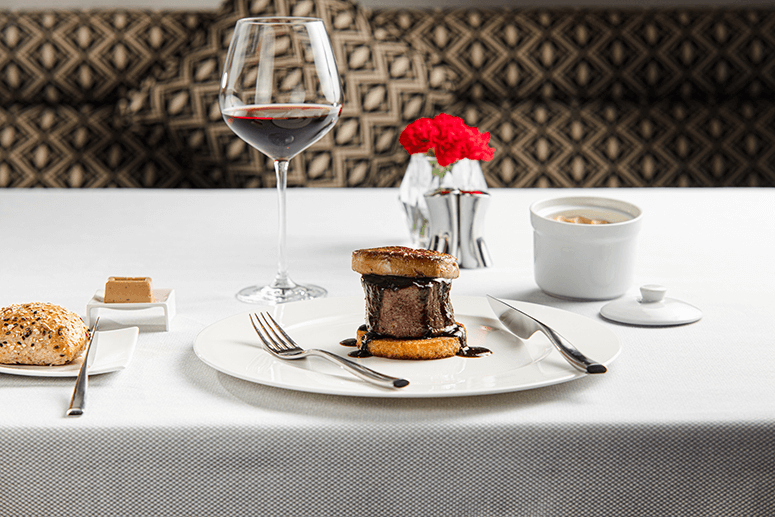
The main of Tournedos Rossini is magnificent. You’ll be overwhelmed by the luxe tower of Black Opal Angus topped by a slab of foie gras and served with freshly made brioche. This has been a staple of Old Manila’s menu, and chef Kubler adds his own French spin to the dish. The beef tenderloin and truffle sauce is rich, but not too rich: you will still have room for the truffle mashed potato on the side.
For pork lovers there’s Confit Pork Belly, Japanese Kurobuta pork sourced locally from Esguerra, with sweet potato puree and corn cooked with smoked paprika and gochujang sauce “for the Korean style because Filipinos, you like Japan and Korean food, so to put some K-pop,” chef Kubler says mischievously.

Dessert was a delightful cavalcade of sweets by pastry chef Analyn Solano: a visually striking Pear & Hazelnut tree with spiced Moscato, sponge and salted caramel; Lime Basil & Strawberry, a strawberry-basil sorbet bar with berry gel and lemon crumble; Banana & Toffee with a tuile, cremeux and rum-raisin ice cream; Coffee & Caramel with espresso streusel, toffee and crunchy pearls; a Chocolate & Raspberry gateau; and petits fours served in what looked more like a metal sculpture than a tray.
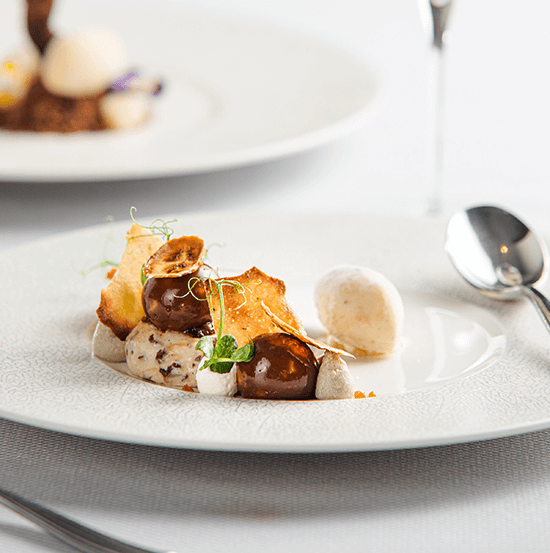
“Before, people most of the time were going to the restaurant for the chef,” notes Kubler, who got married just seven months ago to a Frenchwoman (sorry, ladies). “Now the people want a guest experience.”
When we ask him about his impressions of our country and its people, he replies, “The Philippines is very complex country—you have many landscapes, many languages, provinces, produce. Even the politics is complex, but at the end, Filipinos, you are a very welcoming people. Shy, sometimes sensitive as well. That's why we need to adapt when we are expats. Everything is a new experience for me and the team as well because I'm shy, I come from France, my mentality is different, but both together is a good experience.”


